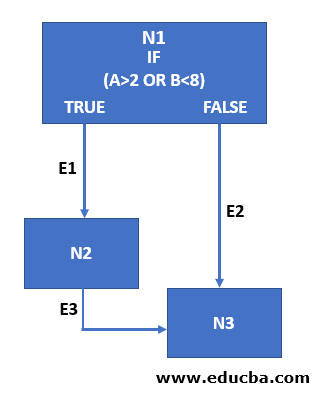Branch coverage is a new crucial metric inside software testing, measuring the amount of of the possible branches (if-else statements, loops, plus other control structures) in the code are actually executed during testing. Ensuring satisfactory branch coverage is vital for figuring out hidden bugs in addition to ensuring the effectiveness of the code. This article goes in to the potential issues that can occur in AI-generated code without sufficient department coverage.
Summary of Branch Coverage
Branch insurance, also known seeing that decision coverage, is definitely a measure of testing completeness. It focuses about ensuring that create route through a new given part regarding the code is tested. This contains each of the true and false evaluations associated with each decision point. In the situation of AI-generated signal, maintaining high branch coverage is important to make certain the signal is not just syntactically right but also functionally strong and reliable.
The Importance of Branch Coverage in AI-Generated Code
AI-generated codes can bring many benefits, such like rapid development in addition to the ability in order to handle complex tasks. However, it in addition comes with its set of difficulties. AI algorithms may possibly generate code that will appears correct yet contains hidden reasonable errors or advantage cases that usually are not immediately evident. Without sufficient department coverage, these concerns may go undetected until they lead to significant problems found in a production environment.
Potential Issues With no Sufficient Branch Insurance
1. Unhandled Edge Cases
Just about the most significant risks of insufficient branch coverage is definitely the failure to recognize and handle advantage cases. AI-generated code may not assume every possible input or even scenario, leading in order to unexpected behavior if such edge situations occur. For example, a function designed to handle numerical advices might not account intended for negative numbers, primary to errors or crashes.
Example:
With this example, the code does not cope with the case where benefit is zero or perhaps negative. Adequate part coverage testing might reveal this oversight, prompting the add-on of appropriate mistake handling.
2. Reasonable Errors in Conditionals
AI-generated code will often contain logical mistakes in conditionals that are not immediately apparent. These errors can business lead to incorrect conduct, especially in complicated algorithms or decision-making processes.
Example:
In this particular scenario, the condition only checks in the event that both criteria are met, but what if the membership and enrollment criteria should always be more nuanced? Inadequate branch coverage may well fail to catch rational errors where one criterion should have got been enough regarding eligibility.
3. Not enough Error Handling
Error handling can be a critical aspect of solid code. AI-generated signal may lack comprehensive error handling mechanisms, leading to crashes or undefined behavior when unexpected circumstances arise.
Example:
In this article, there is absolutely no check for division by zoom, which would cause a runtime error. Adequate branch coverage would test scenarios exactly where b is no, leading to the particular addition of suitable error handling.
5. Unoptimized Performance
AI-generated code might be functionally correct nevertheless could suffer by performance issues as a consequence to unoptimized branching logic. Insufficient side branch coverage testing might miss opportunities to optimize the computer code, ultimately causing inefficiencies.
Example of this:
Could code correctly finds the maximum number, it bank checks every element in the list. If the particular list is quite large, this can prospect to performance problems. Comprehensive branch coverage testing might recommend improvements, such since early termination if certain conditions are met.
5. Inconsistent State Managing
Express management is crucial in applications, individuals of which involve multiple ways or stages. AI-generated code might not constantly manage state alterations, leading to pests or unpredictable conduct.
Example:
python
With this example, the point out changes are not managed consistently. The order could potentially end up being shipped many times in case process_order is called repeatedly. Adequate branch coverage would identify this sort of issues, ensuring that point out transitions are dealt with correctly.
Ensuring navigate to this website
In order to mitigate these issues, that is essential to be able to incorporate comprehensive screening strategies that concentrate on achieving great branch coverage. Below are a few best practices:
one particular. Automated Testing
Use automated testing frameworks to systematically test all possible twigs inside the code. Equipment like PyTest, JUnit, or TestNG can easily help ensure that every single decision point will be evaluated.
2. Computer code Review
Regular signal reviews by knowledgeable developers will help recognize potential problems that computerized testing might miss. Peer reviews might provide insights in to logical errors or performance bottlenecks.
3 or more. Static Analysis
Make use of static analysis tools to analyze the particular code for prospective issues before runtime. Tools like SonarQube or Pylint can identify code aromas, unused branches, in addition to other potential difficulties.
4. Fuzz Screening
Fuzz testing entails providing random inputs to the program code to uncover unexpected behaviors or failures. This method can be particularly useful in determining edge cases that will were not initially considered.
Conclusion
AI-generated code holds immense potential, but it should be rigorously tested to make sure reliability in addition to robustness. Insufficient branch coverage can lead to unhandled advantage cases, logical errors, inadequate error coping with, unoptimized performance, in addition to inconsistent state managing. By adopting extensive testing strategies and even ensuring high part coverage, developers can mitigate these dangers and harness the total potential of AI-generated code
